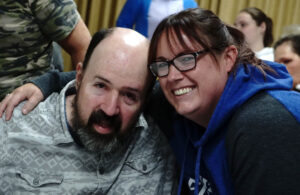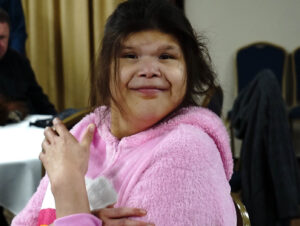Special needs adults or adults with learning disabilities can often face challenges when communicating with others. There can be difficulties relating to speech, social skills, as well as behavior. Fortunately there are a large number of strategies and programs that can offer assistance for special needs adults, which will enable them to adequately express their needs. There are ways for even the most extreme situations for adults to initiate, respond and make choices when it comes to their needs.
 We have made great strides in recent decades in assisting adults with learning disabilities. In the past, these same people have unfortunately, been institutionalized. Many of them were probably quite capable of taking care of themselves and living as a contributing member of their communities, but were simple not given the opportunity to do so. In some third world countries around the globe, individuals are still institutionalized. This is slowly changing and needs to keep changing completely. There are new efforts of inclusion not only in schools, but in communities as a whole, to enable adults with special needs to live happy, healthy, productive, lives on their own. We need to cultivate this as much as possible. Adults with special needs have a positive part to play in society and can be strong contributors to their respective communities.
We have made great strides in recent decades in assisting adults with learning disabilities. In the past, these same people have unfortunately, been institutionalized. Many of them were probably quite capable of taking care of themselves and living as a contributing member of their communities, but were simple not given the opportunity to do so. In some third world countries around the globe, individuals are still institutionalized. This is slowly changing and needs to keep changing completely. There are new efforts of inclusion not only in schools, but in communities as a whole, to enable adults with special needs to live happy, healthy, productive, lives on their own. We need to cultivate this as much as possible. Adults with special needs have a positive part to play in society and can be strong contributors to their respective communities.
To help special needs adults stand on their own and become positive contributors to their environments, it is necessary to understand some of the communicational challenges that they are facing.
These difficulties may include:
- Trouble with social skills. Understanding social norms and identifying how to respond appropriately in certain situations can be quite challenging for many adults with special needs.
- On a more basic level, it can be difficult to understand what others are saying and also to understand more abstract aspects of language.
- Not very verbal at all, or not having the ability to adequately express thoughts and feelings can be an issue for some individuals.
These difficulties can also, in certain cases, be exacerbated by sensory issues such as hearing and visual impairment. Problems with the inability to communicate can lead to behavioral issues. This can occur when individuals become frustrated when trying to express themselves. It is very hard for people with special needs when they are continually misunderstood and they lack the ability to make others understand what they are feeling. Because of this, it is then difficult to understand what others expect of them.
Using a Total Communication approach can greatly enhance our ability to adequately communicate with individuals with special needs and learning disabilities. By using this approach, we will see how to improve the communication environment as a whole in these situations. So, what is Total Communication?
Total communication is a somewhat ‘holistic’ approach to communicating, which uses a range of modalities that often entails thinking outside the box. By doing this, it is possible to create a system of communication for an individual.
This might include things such as:
- Using any and every means available to communicate or receive a message.
- Optimizing an individual’s skills or areas of strength to reduce his impairments and create the best fit possible for the individual.
- Some type of ‘catch all’ that that ensures, even in a worst case scenario, that there exists some means of communication.
- Providing support and opportunities for each individual to have success and actualize their potential.
 There are also various strategies that may be utilized in a Total communication approach. Each individual is unique and may benefit from a range of modalities rather than just one or the other. This is not meant to represent a complete list, but more to serve as examples of the many aspects of communication that might be used in certain circumstances.
There are also various strategies that may be utilized in a Total communication approach. Each individual is unique and may benefit from a range of modalities rather than just one or the other. This is not meant to represent a complete list, but more to serve as examples of the many aspects of communication that might be used in certain circumstances.
- Touch cues. Touch cues are most often used for deaf and blind individuals let allow them to know what is happening or who is present.
- Texture cues. This approach involves using objects or symbols that can allow an individual to build up a range of communication options. One of the oldest systems that is still in use today, this system has been helping the blind to read and write since 1821.
- Facial expressions and body language. These are some of the more obvious examples of nonverbal communication, and perhaps some of the most natural to adapt into total communication techniques. Most of us are already familiar with a wide range of body language and expressions, so it becomes much easier to incorporate these into communication with adults who have special needs.
- Pictures and visual strategies. Visual support can help many individuals with comprehension and understanding.
- Signing varies in complexity and there are a wide range of systems available that can be extremely helpful depending upon the individual.
- Print and symbols. Sometimes combining a visual symbols with printed words or phrases will help where other forms of communication have failed.
- Assistive technology. This is a catch-all phrase that uses both lo-tech and hi-tech devices that include assistive, adaptive, and rehabilitative methods to focus on enhancing and facilitating communication.
- Speech, voice, and language. Many adults with special needs are still able to use their voice to play a vital part in communicating with others.
- Eye gaze and scanning. In some cases, using your eyes to control a device to communicate is another way to allow individuals to succeed in expressing their thoughts and feelings.
As you can see, total communication encompasses a very wide range of different ways to communicate. Most of these methods are things that we already use in our every day lives to communicate with each other. This makes it easier and more natural to adapt these methods for adults with special needs.
The important thing to remember is that by combining all these different communication modalities to benefit each individual, rather than using a one-size-fits-all approach, we can greatly increase the effectiveness and strength of our results.








